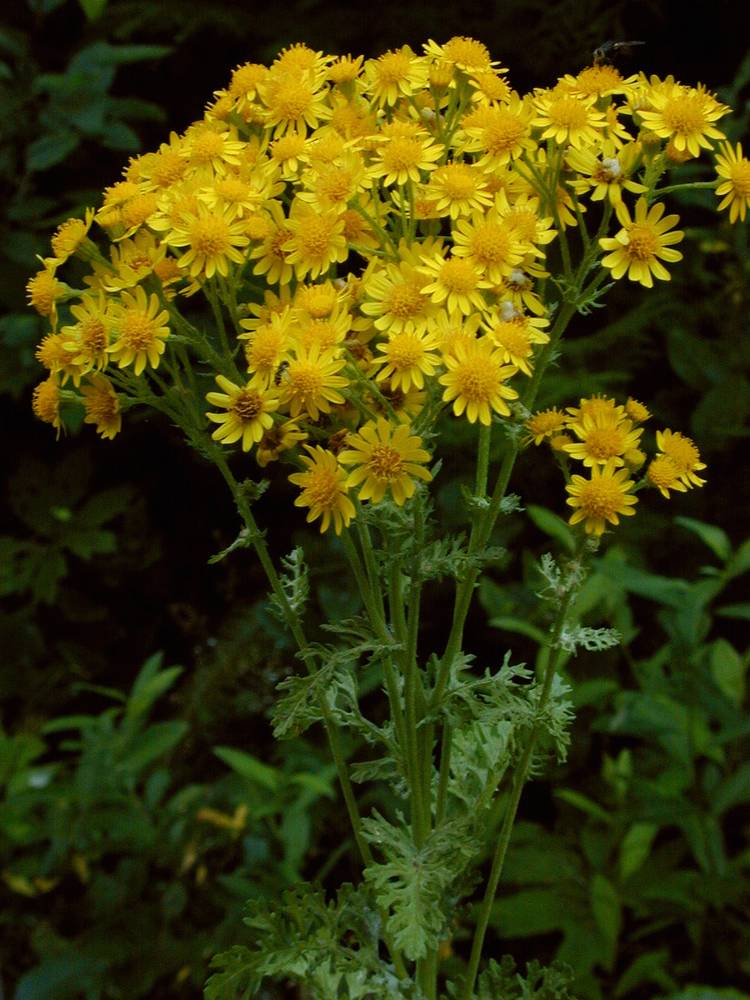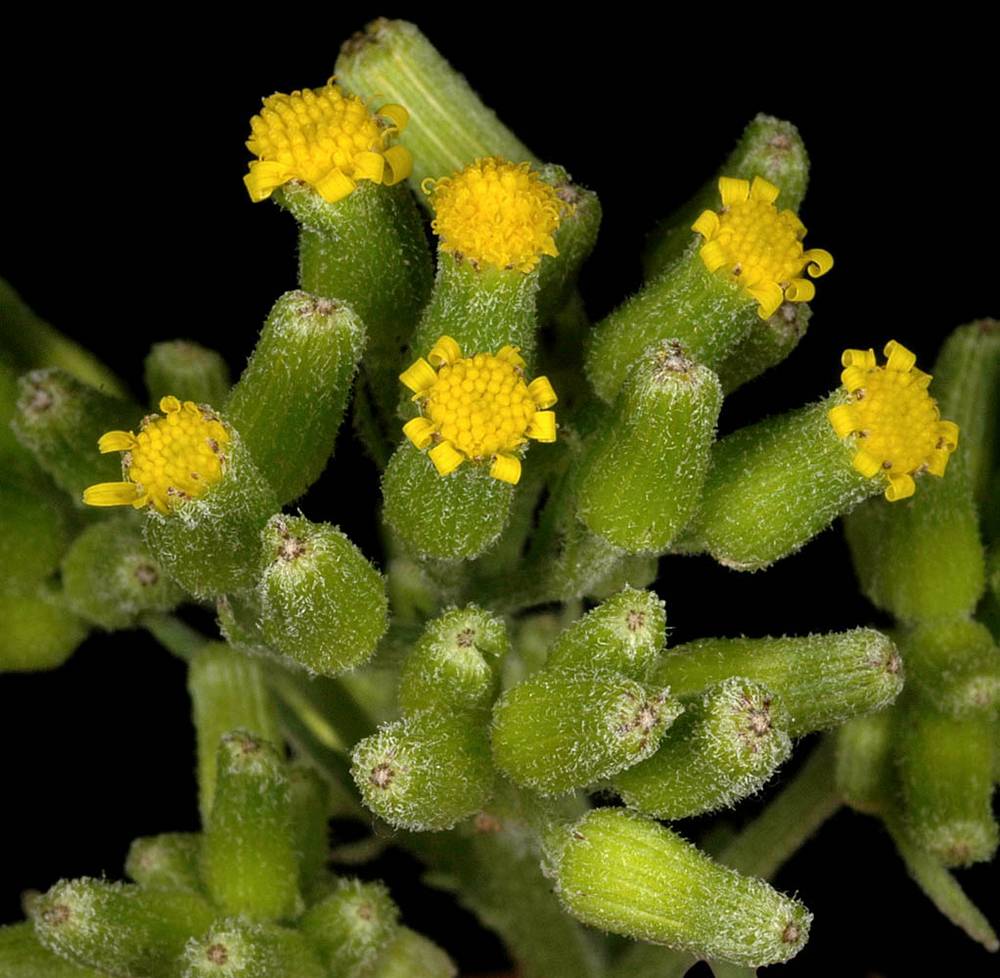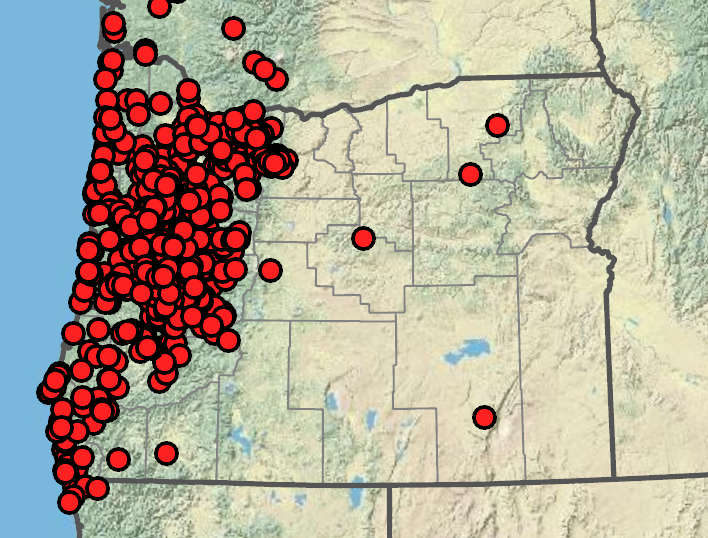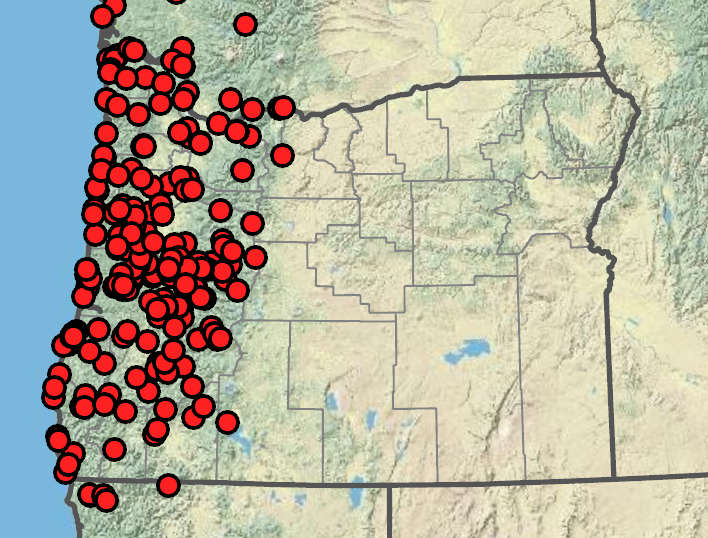Senecio jacobaea
Senecio sylvaticus
stinking willie, tansy ragwort
wood groundsel, woodland ragwort
1, or rarely 2–4 and loosely clustered, often purple-tinged, sparsely and unevenly tomentose.
1, densely pubescent with abundant curly hairs.
basal usually withering before flowering;
cauline ± evenly distributed along stems;
distal slightly smaller; ovate to broadly ovate, bases tapered, usually 1–3-pinnate, ultimate margins dentate;
lobes obovate to spatulate, petiolate.
evenly distributed along stems, obovate to oblong in outline, bases tapering, usually 1–2-pinnately lobed or divided, ultimate margins dentate;
proximal petiolate;
distal clasping and bract-like.
compound corymb-like arrays;
bracts conspicuous but small.
corymb-like arrays;
bracts 0 or inconspicuous.
widely cylindric or urn-shaped.
cylindric.
~13;
rays 8–12 mm.
0, rarely 1–8;
rays 1–2+ mm.
60–70+.
40–50.
13, 3–4(5);
tips black or dark green.
13+, rarely 21, 4–7+ mm;
tips green or minutely black.
2–6 bractlets, inconspicuous, usually < 2 mm.
0 or 1–5+ linear to filiform bractlets, 2–3 mm.
0.75–1.3 mm, sparsely hairy or glabrous.
1.5–2.5 mm, sparsely pubescent on ribs.
(10)20–60+.
12–24.
=40.
=40.
Senecio jacobaea
Senecio sylvaticus
Disturbed areas, pastures, roadsides. Flowering May–Sep. 0–1600 m. Casc, CR, Est, Sisk, WV. CA, ID, WA; north to British Columbia, northeast to MT, northeastern North America; Europe. Exotic.
Senecio jacobea is an introduced weed, originally from Europe. It establishes in places with cool, wet summers and is particularly toxic to livestock. In most states where it occurs, this species has been declared a noxious weed.
Disturbed open wooded areas. Flowering May–Oct. 0–1200 m. Casc, CR, ECas, Est, Sisk, WV. CA, WA; north to British Columbia, scattered in eastern North America; Asia, Europe. Exotic.
Senecio sylvaticus is a native of Eurasia and favors cool, damp climates. In overall appearance, it resembles the more common S. vulgaris. However, the latter has distinctive black-tipped phyllaries, while S. sylvaticus has phyllaries that are generally green-tipped. This species is well established in the Pacific Northwest and in parts of eastern Canada. Elsewhere it is sporadic.
Debra Trock
Debra Trock
- Local floras:
BC,
CA,
OR,
WA
- Local Web sites:
CalFlora,
CalPhotos,
Flora NW,
PNW Herbaria,
Turner Photog.
WildflowerSearch
iNaturalist (observations)
USDA Plants Database
- LBJ Wildflower Center
- SEINet
- Plants of the World Online
- Encyclopedia of Life
- Wikipedia
- Google Image Search
- Local floras:
BC,
CA,
OR,
WA
- Local Web sites:
CalFlora,
CalPhotos,
Flora NW,
PNW Herbaria
WildflowerSearch
iNaturalist (observations)
USDA Plants Database
- LBJ Wildflower Center
- SEINet
- Plants of the World Online
- Encyclopedia of Life
- Wikipedia
- Google Image Search





